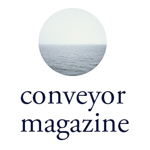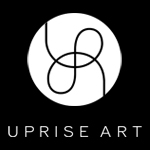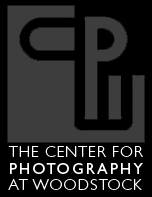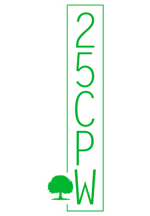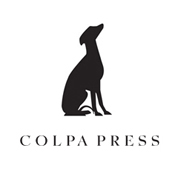Stephanie Slate & M.G. Martin { Part 1 }
double dip recession
there is a shortage of skin
& i have taken my nakedness
to the tattoo employment agency
it costs no money to take off the hair
of my pubis & provides more work
for the agency
the agency appreciates ingenuity
& awards me their highest honor
it is called: untitled improvisation
i think of the time before hair
when i took you to the tree the naked
elders called: what planet is this
where we practiced the ninety nine
disciplines of nakedness & drew
tattoos of tree sap with tree sap
onto our skins
i think of when you said:
we aren’t falsely oblique in a real sense
we are really oblique in a false sense
i am volunteering to bear your mistakes
on my body i would do it for free
but i am a patriot during this recession
i accept the worth of skin but am shamed
that i can’t facsimile mine & distribute
this flesh in these times of infirmity
upon leaving i note:
the agency is open monday through friday
during normal business hours
—-
Stephanie Slate is a photographer living and working in Philadelphia PA. Her B.F.A in photography was received from Pratt Institute in 2008. Slate uses alternative processes such as Platinum/Palladium printing and also Wet Plate Collodion. Her work mainly consists of images that explore the delicate boundaries between the repulsive and beautiful, while her newer work focuses on the wonders of boredom. {www.lynslatephotography.com}
M.G. Martin is the author of One For None (Ink) & the chapbook Fall Out Of Your Skin (Pangur Ban Party). His work has appeared in Word Riot, ZYZZYVA, Explosion Proof, PANK & >kill author, among others. A Pushcart Nominee, M.G. lives & writes in Brooklyn. Find him: here & here.
—-
Words with Pictures is a weekly two-part post that pairs photographers and writers. The first week, a writer is given a photograph to inspire the creation of a new piece of writing. The following week the photographer is given a piece of writing and responds with a new photographic piece. This series is curated by Conveyor Magazine Editor Dominica Paige.
Wanderlust Presents: Thomas Jackson
Hello Thomas Jackson,
Each October we use to all gather for the migratory anomaly of the Chimney Swifts. Just before sunset, several thousand of swifts would suddenly flood the sky. Pulsing in waves of shifting patterns, the seemingly choreographed display would end with a spiral plunge down an old brick chimney to roost till dawn.
Thomas Jackson’s series Emergent Behavior illustrates, yet also challenges this self-organizing phenomena, known as “emergence.” It arises out of the natural patterns and multiplicity of our environment. The slightest gesture, such as the flocks of birds, inherently create a predisposed order. In duality with such order, is natures desire for chaos, to which Thomas invites.
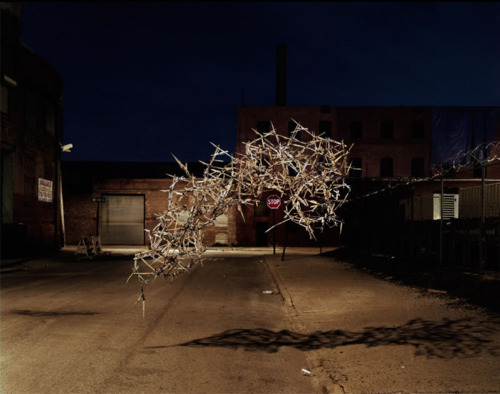 Broken Pallet, 2011 from the series Emergent Behavior
Broken Pallet, 2011 from the series Emergent Behavior
With the use of unlikely materials behaving in seemingly natural ways, the barriers of fact and fiction, play off an allegorical interpretation of the truth.
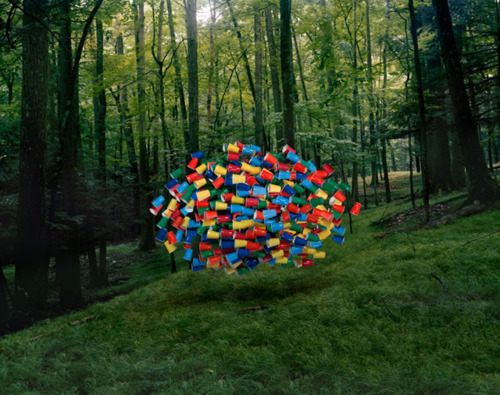 Cups 2011 from the series Emergent Behavior
Cups 2011 from the series Emergent Behavior
Precariously constructed by hand, Thomas uses wire, cups, sticks, and leaves, to suspend these sculptures throughout natural and man-made settings. Most fall away, or are destroyed soon after, which inherently feels like part of the performance and process.
 Cheese Balls, 2012 from the series Emergent Behavior
Cheese Balls, 2012 from the series Emergent Behavior
The familiarity of some materials and ambiguity of other, creates an inquisitive tension. A tension of peculiarities, in an off kilter relationship between the natural and the artificial construction. Assorted foliage, 2012 from the series Emergent Behavior
Assorted foliage, 2012 from the series Emergent Behavior
Like kinetic ghosts, consequence seems evident after the pause of each captured moment. Apprehension also arises from the idea of the aftermath, the fall of a tree, or the dissipation of a million air born plastic cups, Emergent Behavior resonates on multiple levels, in its strangely curious dialogue of opposites.
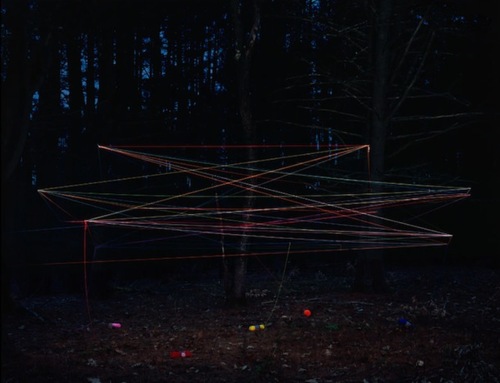 Yarn #1, 2012 from the series Emergent Behavior
Yarn #1, 2012 from the series Emergent Behavior
Thematically, Thomas seems inherently drawn to these contrasts in the world. In The Robot Series, elements of literature, science fiction, and motifs from mid evil tapestries, are used to create a narrative of a lone Robots plight to co-exist with the natural world.
 Robot Coda series, 2011
Robot Coda series, 2011
From the series, Thomas constructed a book to house the story. Acting as an artifact to the world he’d made, the book is an organic collaboration of images, illustration, salvaged wood, and metal. It is an homage to “an inscrutable relic long lost in an apocryphal future.”
 The Robot Book, 2011
The Robot Book, 2011
 Robot Coda series, 2011
Robot Coda series, 2011
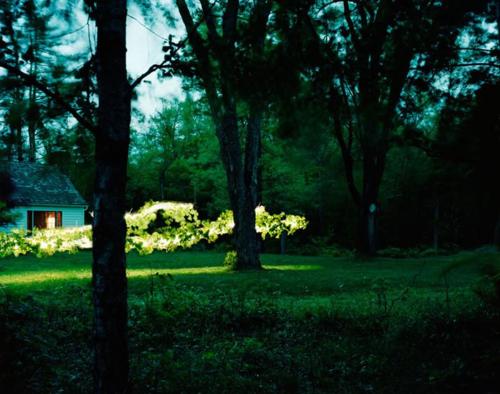 Robot Coda series, 2011
Robot Coda series, 2011
In hesitation to define himself as an experimental visual artist, Thomas utilizes various formulas to manifest his ideas. With the construction of precarious materiel’s, prediction, or lack thereof, is part of the process. In dialogue with the natural world, Thomas builds from the willingness to let go of a self imposed structure. His visual vocabulary highlights the poetic order inherently in place around us.
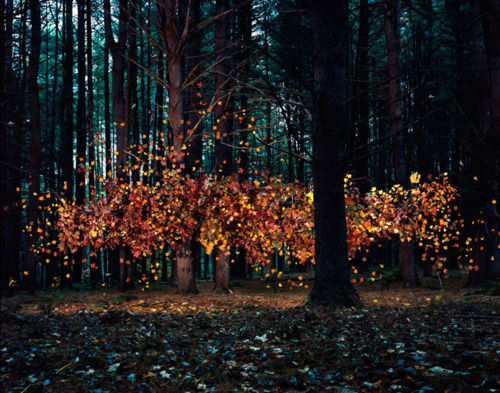 Leaves #1, 2012 from the series Emergent Behavior
Leaves #1, 2012 from the series Emergent Behavior
Like the flock of swifts, the behavior of over 5,000 birds to fly together as one emerges from the desire of the individual birds to avoid collisions while staying close to their neighbor. Nature will always find a way.
Thomas Jackson is a self-taught photographer, who lives in Brooklyn with his wife, daughter and two goldfish, Marty and Marty. His work has been shown at Central Booking in DUMBO, Brooklyn, the Minnesota Center for Book Arts, Vamp and Tramp Booksellers, The Center for Books Arts and the Governors Island Art Fair.
 Nebulae
Nebulae
To see more of Thomas Jackson go here: { www.thomasjacksonphotography.com }
23 Apr 2012 / 4 notes / Wanderlust Aubrey Hays Thomas Jackson
Mark Your Calendars!
PPAC’s 3rd Annual Book Fair
Saturday, May 5th, 2012
From 12:00 -6:00pm
The Philadelphia Photo Arts Center will be hosting its third annual book fair on Saturday, May 5th from 12:00 - 6:00pm. There is already a great line up of local, national and international presses, publishers and artists who will be in attendance selling books, prints and other ephemera.
Some of this year’s participants include…
Gottlund Verlag
Sun System Press
A-Jump Books
Schematic Quarterly
Chad States
Debutante Hair
Center for Documentary Studies at Duke University
Vox Populi
Bodega Press
Visual Studies Workshop
Spaces Corners
MACK Books
Miniature Garden
NOWORK
Empty Stretch
Conveyor Arts
Indie Photobook Library
Lay Flat
Mossless
Swill Children
Chad Muthard
Christopher Gianunzio & Jenny Tondera
Light Work
The Curated Table will include publications by:
Roma Publications
Little Brown Mushrooms
Paula McCartney
Loosestrife Editions
Hamburger Eyes
Megawords
And there will be Book Signings…
Ron Jude
Lick Creek Line (MACK)
Benjamin Lowy
Iraq | Perspectives (CDS/Honickman First Book Prize in Photography)
Ed Panar
Salad Days Volumes I &II (Gottlund Verlag)
Animals That Saw Me: Volume 1 (Ice Plant)
We highly recommend you rent a car, hop on a bus or opt for the train { most romantic mode of transport } and come to the PPAC Book Fair. It’s one of our favorites, mostly because it’s followed by a Philly Cheesesteak. And we get to hang out with all the other awesome participating artists and publishers. We hope to see you there!
For More Information, Visit: { www.philaphotoarts.org }
21 Apr 2012 / 2 notes / Philadelphia Christopher Gianunzio PPAC Book Fair
Rereading
This week I reread Erica Baum’s rereading, Dod Ear.
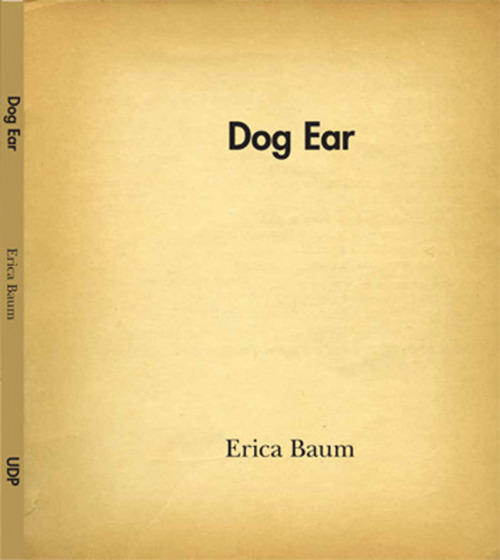
Dog Ear, Erica Baum, New York : Ugly Duckling Press
When you saves their place in a book by folding back the corner of a single page, that book becomes dog-eared; A dog-ear creates a square at the top right corner of a book, the page folded down with text running vertically and the newly visible page behind it with text running horizontally. The juxtaposition between the text of these two pages is the subject of New York photographer Erica Baum’s book Dog Ear.
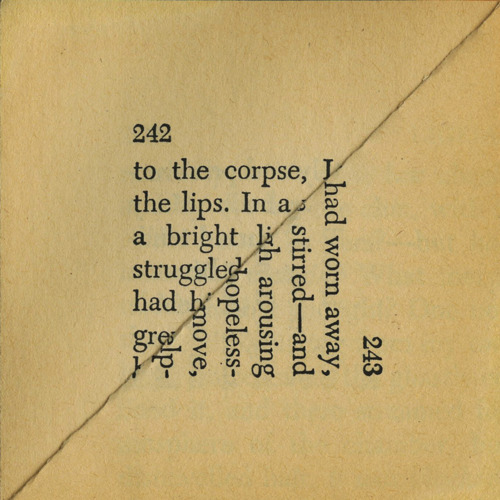
I am a longtime enthusiast of Erica Baum, who has created simple, sharp images from sections of text found on blackboards, labels, library catalogs, book indexes and archives. Many of Baum’s photographs read like concrete poetry, while others break pieces of words into shapes, physicalizing loaded language to the edge of meaninglessness.
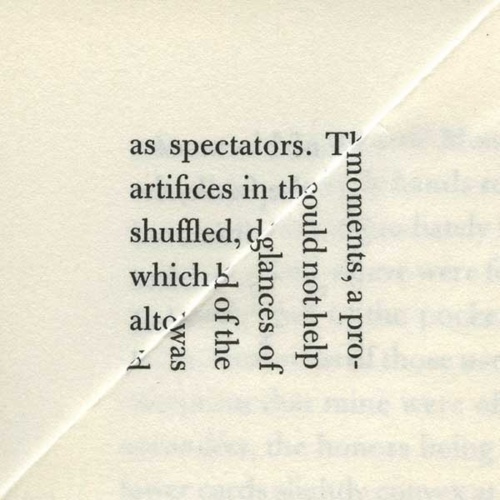
Her word play is at once, both deeply contemporary and achingly nostalgic, a mourning for a more physical relationship to knowledge.
For more information visit: http://www.uglyducklingpresse.org/
MEGAWORDS at the Philadelphia Museum of Art
If you happen to be in Philadelphia this weekend stop by the Megawords Pop Up Book & Zine shop, organized alongside the Zoe Strauss exhibition.
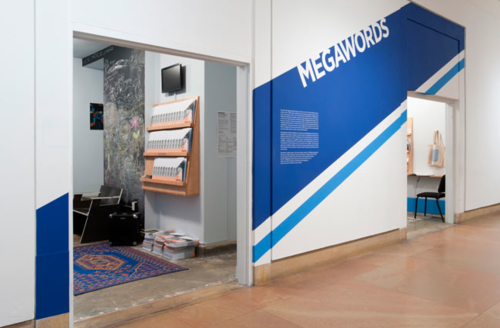




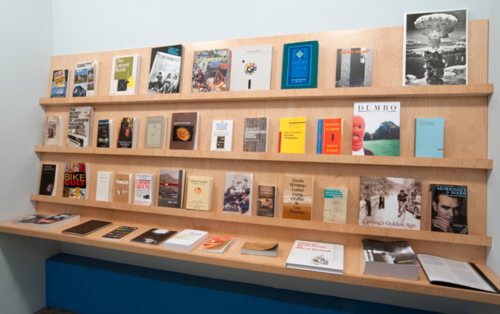
via the Philadelphia Museum of Art Website.
“The artist duo Megawords (Dan Murphy, American, born 1976; and Anthony Smyrski, American, born 1980) creates installations that are equal parts gathering space, event venue, artist studio, and store. The artist Zoe Strauss and the Museum invited them to design this installation as a satellite component of the exhibition Zoe Strauss: Ten Years, on view in the Honickman and Berman Galleries. Megawords has created a two-part zone in which to interact with people and offer alternatives to the ways visitors usually inhabit the Museum. The alcove presents publications that form a constellation of ideas and concerns central to Megawords’ thinking. To the left of the alcove is a workspace for the artists, and a site for public programs, but it is also available as an area where visitors can relax, read, and ask questions.
Photography and public installations are important to both Megawords and Zoe Strauss. Megawords’ eponymous magazine consists primarily of photographs by Murphy and Smyrski as well as their numerous collaborators, documenting life and art in cities across the globe. A new issue of the magazine has been created specifically for this Museum installation. Collaboration and DIY art projects are critical to Megawords’ practice, and the production of the resulting works is always as important as their display. They treat every aspect of an installation’s design, construction, and use as a relevant creative act. Within this installation, they will produce a range of materials including artist books by several of their peers.
Ownership of public space is the central matter at stake in all Megawords projects. Who gets to design, decorate, and use public places—including museums? Who has the authority to define how and for whom our cities and public institutions function? Megawords insists that we all do, but we must roll up our sleeves and literally make the spaces—both physical and imaginative—where we want to meet, think, work, and play.”
Philadelphia Museum of Art
26th Street and the
Benjamin Franklin Parkway
Philadelphia, PA 19130
Museum Hours
Tuesday - Sunday
10:00am – 5:00 pm
For More Information, Visit: { www.philamuseum.org }
Allen Chen & James Marks { Part 2 }
[some say heaven]
—-
Allen Chen is a Taiwnanese born New York based artist. He was originally trained as a biological scientist, and in 2010 he completed the full-tiime program at the International Center of Photography. He applies photography, video, and sculpture to investigate subjects in current and historic political events. His work has been shown at Dumbo Arts Festival, 25CPW gallery, and ICP education gallery. His work can be seen at {www.allenchenstudio.com}
James Marks studies Buddhist Philosophy (currently at Harvard Divinity School), and is interested in the relation between thought and intimacy. James doesn’t own a TV, but manages to watch a lot of TV. He writes songs, poems, stories, and essays, the latter mostly academic. He writes reflections on this-and-that at {www.jqmarks.com}
—-
Words with Pictures is a weekly two-part post that pairs photographers and writers. The first week, a writer is given a photograph to inspire the creation of a new piece of writing. The following week the photographer is given a piece of writing and responds with a new photographic piece. This series is curated by Conveyor Magazine Editor Dominica Paige.
Wanderlust Presents: Evgenia Arbugaeva
Hello Evgenia Arbugaeva,
“Once upon a time in Siberia, on the shores of the Arctic Ocean, in a warm bed in a small town, a little girl woke up from a dream. It was morning, but it was still dark out, for the little town was so far North that the sun would not show itself for many months. They called this the Polar Night.”
 Tiksi, 2011
Tiksi, 2011
Growing up on Siberia’s Arctic coastline, Evgenia Arbugaeva’s series Tiksi, is a nostalgic recollection of a vanishing childhood. After the fall of the USSR, Evgenia’s family along with many others, boarded up the windows of their homes and left for the possibility of more. Tiksi was a childhood filled with a theatrically temperate landscapes, white-out winters with undefined horizons, and an aurora borealis prone night sky. The scenery, palette, and moments of pure imagination made a lasting impression on Evgenia.
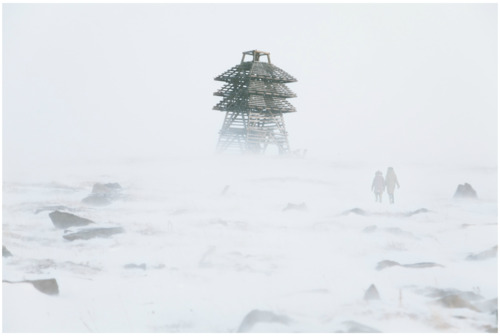 Tiksi, 2011
Tiksi, 2011
18 years later she returned to photograph her childhood home. It was a voyage of nostalgia, to recapture the mythical perceptions from memories hinging on fiction. Unfortunately Tiksi was now nearly a abandoned after grave economic decline, and Evgenia struggled with manifesting the past. Returning to New York, she found only one photo captured that fleeting romanticism -a picture taken behind a young girl tossing stones.
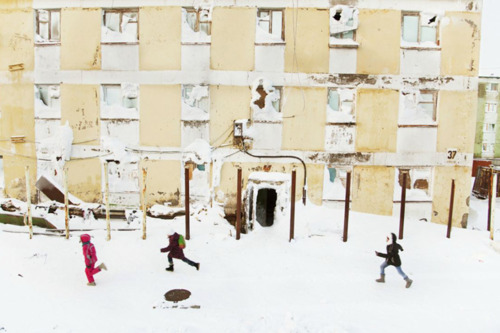 Tiksi, 2011
Tiksi, 2011
Three months later, Evgenia returned, found the girl, Tanya, and started photographing her. An instant bond was formed over a Jacque Cousteau fascination for exploration, as Tanya dons a red cap in homage to the French pioneer.
 Tiksi, 2011
Tiksi, 2011
Evgenia followed and documented her through sea and tundra, cohorts in a fascination and adventure. Highlighting the extraordinary in the ordinary life of a young girl, Evgenia’s own construction of memories were recalled once again.
 Tiksi, 2011
Tiksi, 2011
There is an inherent relatability to Evgenia’s process as an image maker. Like many, we are also collectors and archivers of memories. Photography acts as an anchor to these uncanny moments that strongly imprint on us. Like Evgenia, this insatiable curiosity for the world may never subside…nor should it.
 Tiksi, 2011
Tiksi, 2011
It is the possibility of things unexplainable, yet still possible that drives us to make images.
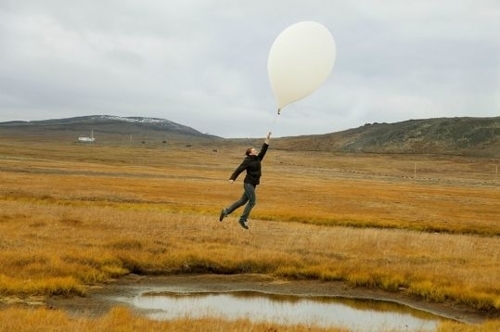 Tiksi, 2011
Tiksi, 2011
This past fall, Tanya’s family, like Evgenia’s left Tiksi. Hope for a better future has driven many families to move away. The story and series of Tiksi, much like that of both girls, has now become a memento. Frozen in time, it is a cathartic ode to a disappearing town by the cold sea.
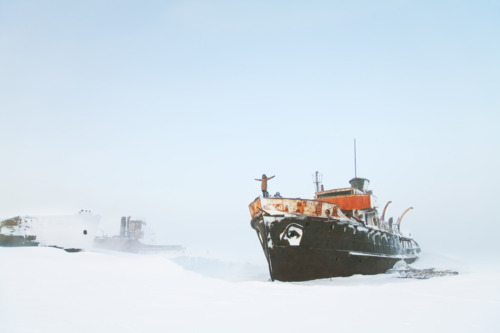 Tiksi, 2011
Tiksi, 2011
“Tanya, her sister Olga, and I at the abandoned TV antenna just a little outside of the town. This is a very cold and quiet night, so quiet that our crunchy steps on the snow feel like an intervention. We try to keep our voices low, as though we are afraid to wake somebody up.
Tanya whispered: ”Look, I think Aurora Borealis is about to appear on the sky… shhhhh…here it comes.”
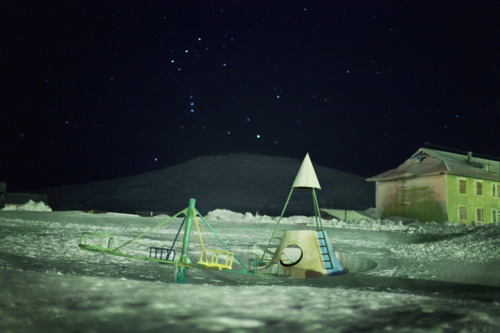 Tiksi, 2011
Tiksi, 2011
Evgenia studied at the Moscow Academy of Photography as well as the International Center of Photography in NYC. She now works as a freelance photographer between Russia and New York.
 Tiksi, 2011
Tiksi, 2011
To see more of Evgenia Arbugaeva go here: { www.evgeniaarbugaeva.com }
16 Apr 2012 / 6 notes / Wanderlust Aubrey Hays Evgenia Arbugaeva
Image Unavailable
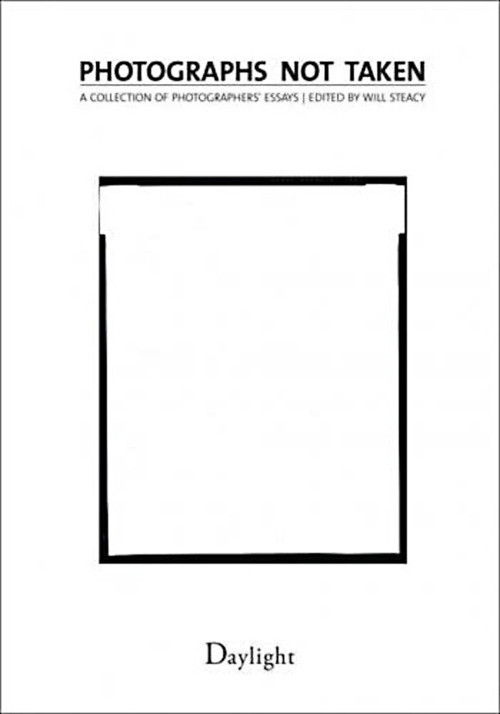
On assignment, Simon Roberts met Priscilla Dzengwe, a rape victim and AIDs patient dying in a clinic in Zimbabwe. During their talk, a group of her friends arrived and began singing. “The girls, including Priscilla, began to cry as they sang. For the first time in my career”, writes Roberts, “I felt physically unable to take a photograph.”
Photographs Not Taken is an unillustrated collection of essays by photographers about the pictures they were unable to take. Each image-maker was asked to describe the circumstances surrounding “moments that never became pictures.” Their responses include stories of technical difficulties, missed opportunities and ethical dilemmas.
While the book is centered on the idea of the lost moment, it contains accounts, like Simon Roberts’s, wherein the choice to photograph would have meant loosing the moment.
Photographs Not Taken was conceived and edited by Will Steacy, and published by Daylight, March, 2012. The 5 ½ x 8 inch, 232 page, paperback features contributions by sixty two photographers: Dave Anderfson, Timothy Archibald, Roger Ballen, Thomas Bangsted, Juliana Beasley, Nina Berman, Elinor Carucci, Kelli Connell, Paul D’Amato, Tim Davis, KayLynn Deveney, Doug Dubois, Rian Dundon, Amy Elkins, Jim Goldberg, Emmet Gowin, Gregory Halpern, Tim Hetherington, Todd Hido, Rob Hornstra, Eirik Johnson, Chris Jordan, Nadav Kander, Ed Kashi, Misty Keasler, Lisa Kereszi, Erika Larsen, Shane Lavalette, Deana Lawson, Joshua Lutz, David Maisel, Mary Ellen Mark, Laura McPhee, Michael Meads, Andrew Moore, Richard Mosse, Zwelethu Mthethwa, Laurel Nakadate, Ed Panar, Christian Patterson, Andrew Phelps, Sylvia Plachy, Mark Power, Peter Riesett, Simon Roberts, Joseph Rodriguez, Stefan Ruiz, Matt Salacuse, Alessandra Sanguinetti, Aaron Schuman, Jamel Shabazz, Alec Soth, Amy Stein, Mark Steinmetz, Joni Sternbach, Hank Willis Thomas, Brian Ulrich, Peter Van Agtmael, Massimo Vitali, Hiroshi Watanabe, Alex Webb and Rebecca Norris Webb
For more information visit: http://www.daylightmagazine.org/store/photographs-not-taken
Liz Sales
Conveyor Arts is super excited to present The Northeast Kingdom: Photographs by Andrew Frost, on view at United Photo Industries, located at 111 Front Street in Dumbo, Brooklyn, from April 28th until May 20, 2012. An opening reception will be held on Saturday April 28th from 6:00 to 9:00 p.m. The show will also be open to the public during the monthly First Thursdays Dumbo Gallery Walk on May 3rd from 6:00 - 9:00pm.
For the past two years, Frost has been making large-format photographs in and around the small town of Groton, Vermont, the town where his relations have lived for more than two hundred years. His father left to join the Navy in the 1970s, and, growing up in a military family, Frost moved quite frequently and never established a place he considered home. Partly because of this nomadic upbringing, The Northeast Kingdom, the northernmost counties in Vermont, held a mythical sense of history for Frost, having been romanced by the stories of his father’s youth. “I always imagined that it would be this beautiful place, where kids ride their bikes to the town store and everyone knows each other, like something out of a Hardy Boys book.”
Two years ago, after moving to upstate New York, he finally made it to Vermont. It was the first time he had felt a deep connection, a sense of real belonging, to a place. Since then, Frost has travelled back frequently, 8 x 10 view camera in tow, looking for his roots. Making photographs with a view camera is slow and gradual, much like farming or writing, the process seems to compliment the way of life in small-town Vermont.
For his first solo exhibition, Frost will present eleven large-scale black and white photographs from his travels to Vermont over the last two years. They focus on the collision of myth, place, and the notion of perceived reality. The photographs speak to the balancing act we undertake as we distinguish between what we imagine elements of our history to be and what they really are. Through precisely considered shifts in tonality, light, and composition, Frost transcends the banal moments of everyday life in this small town and turns them into subtle and poignant vignettes, reflecting a place he had built in his mind over decades. The photographs earnestly explore the beauty of rural life, while simultaneously questioning its viability.
Andrew Frost was selected as the recipient of the Conveyor Photo Grant by a panel of jurors which included John Stanley, Director of the Camera Club of New York; photographer Mette Juul; and previous grant recipient Jeremy Haik. This is the second exhibition organized as part of the annual Photo Grant, which awards one photographer a solo show printed and curated by Conveyor Arts
We also couldn’t be more exicted to collaborate with United Photo Industries, a Brooklyn-born, art-presenting cooperative dedicated to identifying, harnessing, and occasionally conjuring unexpected exhibition opportunities. For more information visit: {www.unitedphotoindustries.com}
12 Apr 2012 / 4 notes
Allen Chen & James Marks { Part 1 }
Three Times
I.
Returning, as ever,
to body, speech, mind;
centers of pleasure
where ever I should find
the time for leisure—-
I’ve found my stride
in the lostness of the life implied
by memory;
call it mind, but, imperceptibly,
override
the
impulse
to
identify—-
Filling our homes with possibilities
not our own
to be for some unknown
neighbors to our neighbors;
this has happened before,
and in before,
I find
(when I turn back
and forth)
the weight of what
my place is worth—-
That way in which my words work.
II.
How is it? seeing what was once so near
as to be kept from sight—-
How is it? the face, the absent gaze
eyes fixed on mine—-
How is it? irony’s laments, blind the eyes
of this room.
III.
She paints others’ lives with lines or lies with other lies.
I recall as true what to her have become forgotten fictions.
Her words: the pleasure of the pain of teeth.
Bite-marks and questions whose answers are the sting they bring.
I still haven’t learned my lesson, and still I live with others’ lies
as if the lines that split their face in two
could mark more than that they live part-time
where light directly hit and where light only incidentally falls;
and the so-called empty spaces cry for being filled in
that are already filled in: with fictions, with longings meant
not for fulfilling but for feeling, and the empty gestures of the wind.
—-
Allen Chen is a Taiwnanese born New York based artist. He was originally trained as a biological scientist, and in 2010 he completed the full-tiime program at the International Center of Photography. He applies photography, video, and sculpture to investigate subjects in current and historic political events. His work has been shown at Dumbo Arts Festival, 25CPW gallery, and ICP education gallery. His work can be seen at {www.allenchenstudio.com}
James Marks studies Buddhist Philosophy (currently at Harvard Divinity School), and is interested in the relation between thought and intimacy. James doesn’t own a TV, but manages to watch a lot of TV. He writes songs, poems, stories, and essays, the latter mostly academic. He writes reflections on this-and-that at {www.jqmarks.com}
—-
Words with Pictures is a weekly two-part post that pairs photographers and writers. The first week, a writer is given a photograph to inspire the creation of a new piece of writing. The following week the photographer is given a piece of writing and responds with a new photographic piece. This series is curated by Conveyor Magazine Editor Dominica Paige.
Doll Clothes, Cindy Sherman. 1975.
Upon a second visit to see the Cindy Sherman Retrospective at the MoMA this week, I discovered this delightful film and several photographic collages created early on in her career. They are obscure and less circulated than the Film Stills and other iconic images by Sherman, and so I wanted to share it with you all. Hope you enjoy!
10 Apr 2012 / 7 notes / Cindy Sherman Doll Clothes MoMA Christina Labey
Wanderlust Presents: Laura Plageman
Hello Laura Plageman,
There is a precious physicality to the photographs Laura Plageman constructs. Wavering between image and object, her recent series Response, engages the sculptural materiality of image-making.
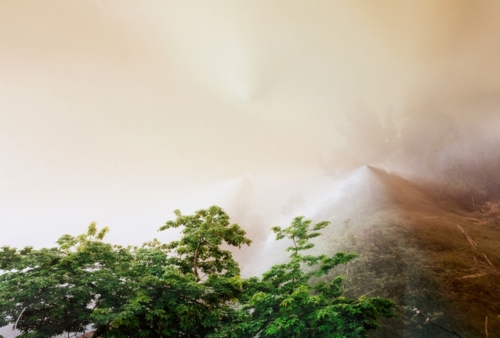 Trees and Fog, California 2011 from the series Response
Trees and Fog, California 2011 from the series Response
Starting with the photographic print, Laura folds, bends, and creases the image into a sculptural metamorphosis of subtle manipulation. The evidence of this process holds a stark sentiment, like the folds of an old love letter turned over and over in the hand of the recipient.
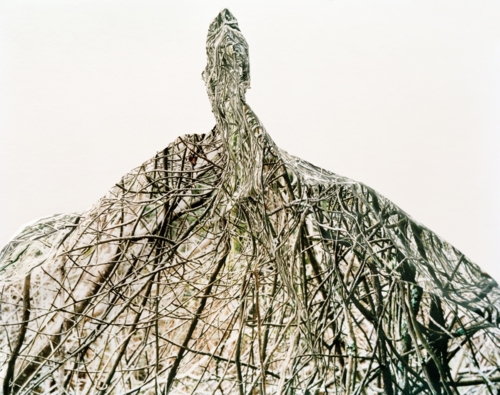 Thicket, 2006 from the series Response
Thicket, 2006 from the series Response
Out of intrinsic artistic frustration, Response, was born. While in her studio, Laura found herself at struggle with the direction of a new image, so she pulled it from the wall and began re-working it as a still life. The dimensional possibilities of these reformed landscape give new life to an already rich image. The rolling green hills form an animated line of blooming teeth.
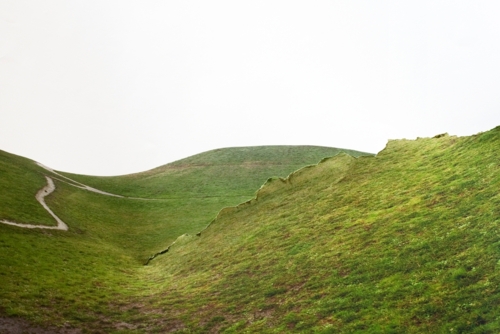 Green Hill Washington, 2010 from the series Response
Green Hill Washington, 2010 from the series Response
Or the bursting vines of a Kudzu plume, turn to a cyclone of three dimensional movement.
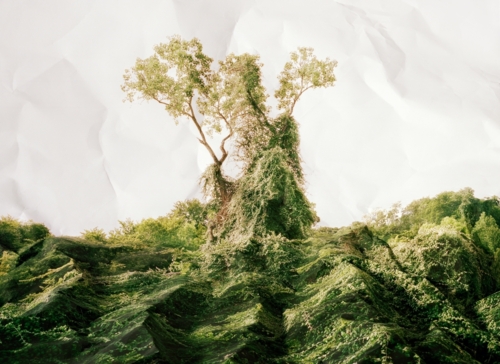 Kudzu, Texas 2010 from the series Response
Kudzu, Texas 2010 from the series Response
The series Response, speaks to Laura’s fascination for such densely aggressive landscapes, and the psychological impact they can have on people. More so, when infiltrated or disrupted by the effects of human contact, Response, holds environmental undertones.
Referencing the invasive species Kudzu, while visually lush, the dark contrast of its beauty lies in the invasiveness of its species. Growing up to a foot a day, its dense blanket smothers everything in its path with a heavy shade. Response reminds me of a stance from a poem by writer Beth Ann Fennelly:
Kudzu sees a field of cotton,
wants to be its better half.
Pities the red clay, leaps across
the color wheel to tourniquet.
Sees every glass half full,
pours itself in. Then over the brim.
Scribbles in every margin
with its green highlighter. Is begging
to be measured. Is pleased
to make acquaintance with
your garden, which it is pleased to name
Place Where I Am Not.
Yet. Breeds its own welcome mat.
Like Kudzu, Laura work draws from an almost somber beauty of such stark contrasts. There are remnants of something more in her photographs, seen in the subtle clues and gestures of melancholic attraction.
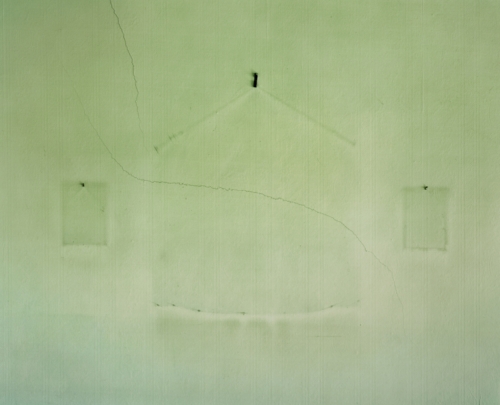 Green Wall, 2006 from the series In-Between Places
Green Wall, 2006 from the series In-Between Places
The formal qualities of some images, paired with the slightness of manipulation in other others, resonate with a sense of mystery. Each landscape is approached with the same sincerity for contact with the natural world. Be it a tactile need to interact with the image once its created, or more so in the decisive moment, Laura is writing her own the rules.
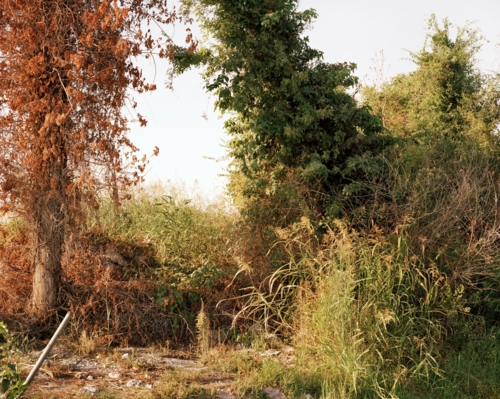 Telephone Poll, 2006 from the series In-Between Places
Telephone Poll, 2006 from the series In-Between Places
Her photographic process involves both traditional and digital tactics. Shooting mainly large format, physically altering, and then printing digitally for pliability, Laura considers experimentation’s invaluable to the process. She received her MFA from the California College of the Arts and now lives and teaches in Oakland.
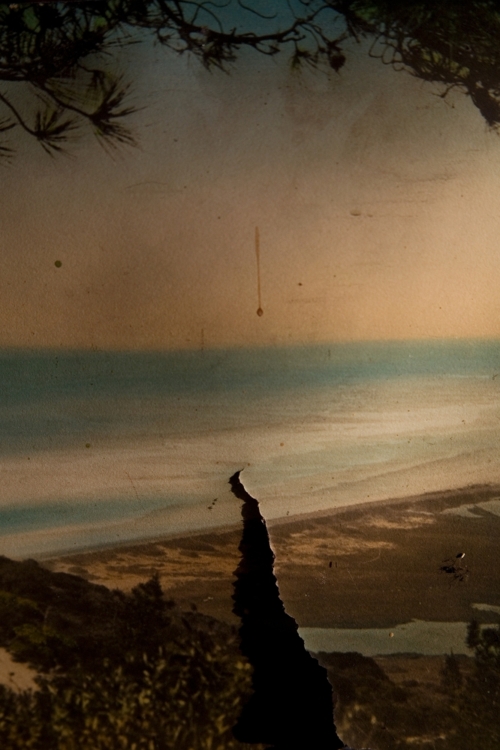 Vista 2008, from the series N Scale
Vista 2008, from the series N Scale
To see more of Laura Plageman go here: { www.photolp.com }
9 Apr 2012 / 2 notes / Aubrey Hays Laura Plageman Wanderlust
Books Make Friends
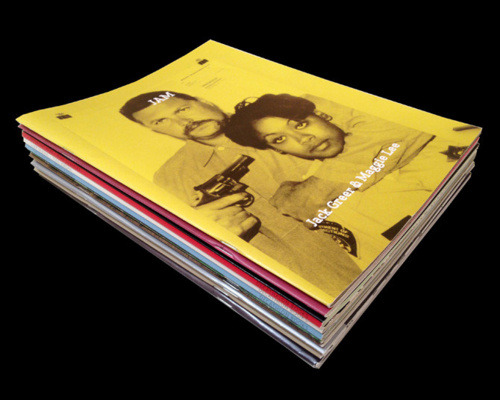
Last Friday, Padraig Timoney’s book, the tenth and final issue in the project, Decathlon Books, was released at Printed Matter. It and all of the previous issues are available individually and in a limited-edition box set. Each box set also includes a stamped and numbered certificate, a mimeograph print by Padraig Timoney, and a poster by Misha Hollenbach.
Decathlon Books is an independent publishing project founded in 2009 by Duncan Hamilton and Peter Sutherland in order to present a group of artists “they find interesting and you should too.” The books, letter sized with a two-color cover and offset printed interior on newsprint, feature Mark Gonzales, Todd Jordan, Misaki Kawai, Estelle Hanania, Til Gerhard, Jack Greer and Maggie Lee, Tomoo Gokita, Misha Hollenbach, Tony Cox and Padraig Timoney. Each carries the lovely truism, “Books Make Friends”.
Find Out More At: http://www.printedmatter.org/
Liz Sales
6 Apr 2012 / 0 notes / Decathlon Books Estelle Hanania Jack Greer Liz Sales Maggie Lee Mark Gonzales Misaki Kawai Misha Hollenbach Padraig Timoney Printed Matter. Til Gerhard Tomoo Gokita Tony Cox odd Jordan Bibliofile Friday
Wanderlust Presents: Riitta Ikonen
Hello Riitta Ikonen,
The translation of photography, as well as its aesthetic potential, is forever evolving. Redefined in new practices and concepts, the threshold of photographic ideology has expanded to reveal fresh new curiosities. In short, photography wears many hats as does visual artist Riitta Ikonen.
From the eastern forests of Finland, Riitta Ikonen’s work is concerned with the performance of images through photography and costume design. With a keen sensibility for collaboration, her practice is defined by the cross pollination of many mediums.
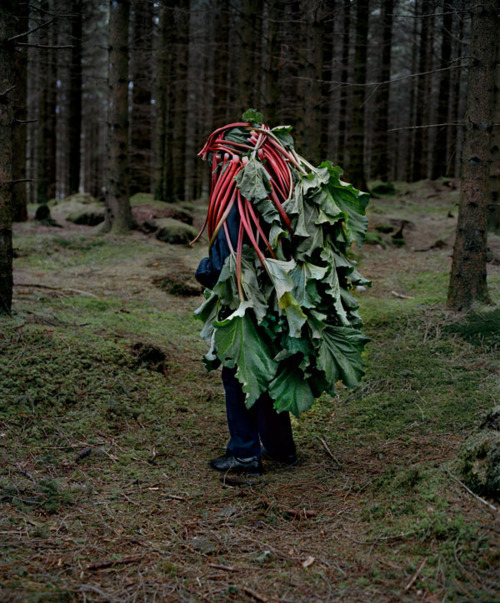 from the series Eyes as Big as Plates, 2011
from the series Eyes as Big as Plates, 2011
With a MA in Communication and Design from the Royal College of Art, Riitta’s involvement in a myriad of creative ventures include a commission by the London 2012 Festival, an installation at the TATE Britain, and developing concepts for the The Olympic Delivery Authority venue.
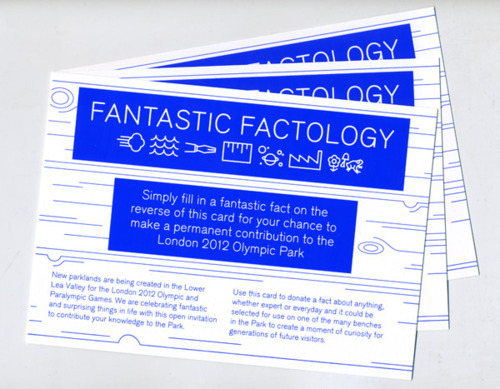 for the London 2012 Olympic Park
for the London 2012 Olympic Park
Conceptually wistful and rich, Riitta thematically explores perceptions of space, identity, and conservation, maintaining that her “hands hold the most decision making power.”
In the recent series Eyes as Big as Plates, Riitta explores the timeless romantics of folklore. In collaboration with Norwegian Artist Karoline Hjorth, the project was created during a residency at the KINOKINO Centre for Art and Film in Norway.
 from the series Eyes as Big as Plates, 2011
from the series Eyes as Big as Plates, 2011
Travelling across the countryside, Riitta implored the participation of local senior heroes, sailors, farmers, artisans, and 90-year old parachuters as her subjects. Eyes as Big as Plates explores a sense of timeless universality for storytelling. The collaborative symbolization of the series, is a graceful gesture to the communal language of imagination.
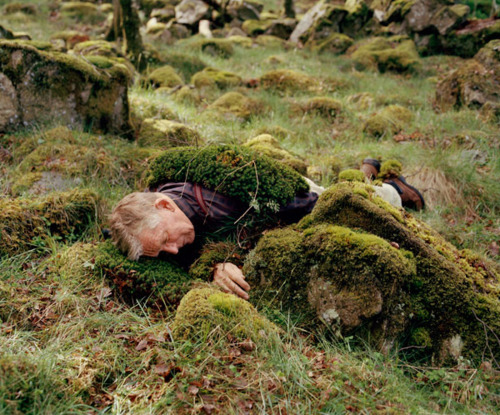 from the series Eyes as Big as Plates, 2011
from the series Eyes as Big as Plates, 2011
The strength of Riitta’s process lies in the inherent construction of each scene as it unfolds before you. With the slightness of a deadpan humor, her work is relentlessly sincere, and theatrically ironic.
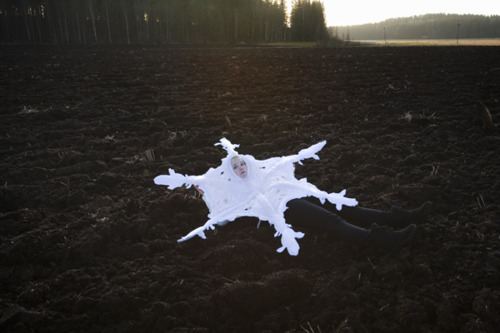 20th December 2007 Valkeala, Finland from the series Snowflake
20th December 2007 Valkeala, Finland from the series Snowflake
As seen in the series Snowflake, a response to global warming in Finland. Ritta places herself against a starkly barren landscape in gesture to a disappearing winter. Many of Riitta’s projects aim to communicate messages of conservation and environmental wistfulness.
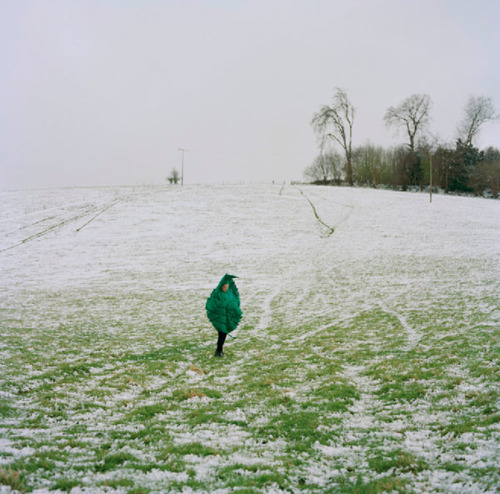 from the series Bird & Leaf.
from the series Bird & Leaf.
In the series Bird & Leaf, Riitta assumes the characters of both Bird and Leaf, exploring the sentimental yearning for nature, and its impermanence. Bringing fourth the question “can we ever really get back to nature?”
In a illustrative approach and homage to artist Miranda July’s book, No One Belongs Here More Than You, Riitta assimilated a poetically empathetic response to the text.
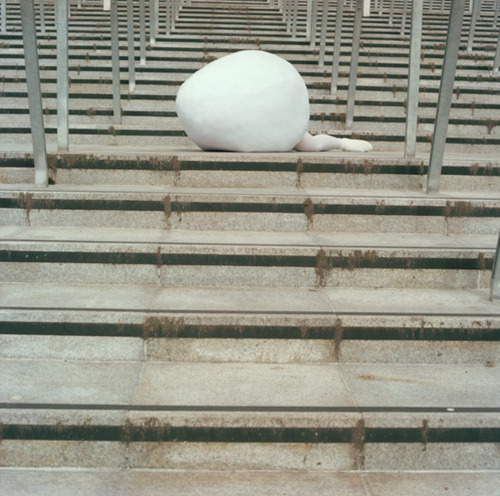 “I called out to my own heart, as if she were within me like an egg,” 2008 from the series No One Belongs Here More Than You
“I called out to my own heart, as if she were within me like an egg,” 2008 from the series No One Belongs Here More Than You
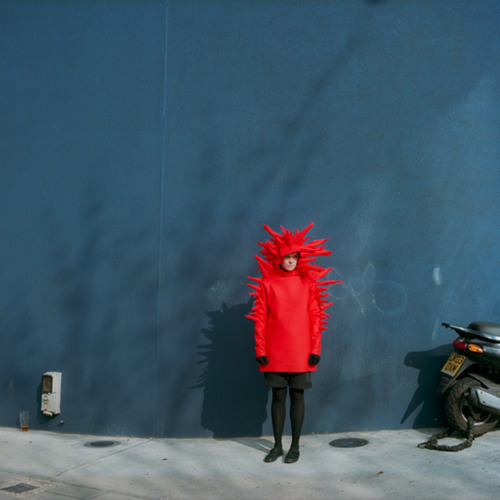 “My unexpressed anger at nothing in particular. And: The feeling that there is a next level and I should be on it.” from the series No One Belongs Here More Than You
“My unexpressed anger at nothing in particular. And: The feeling that there is a next level and I should be on it.” from the series No One Belongs Here More Than You
In the series Mail Art, an ongoing project between Riitta and her tutor Margaret Huber, one postcard per week was to be sent as a document of experiences.
 Chinatown Seeds, 2004-ongoing from the series Mail Art
Chinatown Seeds, 2004-ongoing from the series Mail Art
Since its start in 2004, over 150 postcards have been sent from all over the world, including fishing line and hooks, pens from Brooklyn rooftops, hair, wood from Fragrance Lake, WA, moss, and Chinatown seeds.
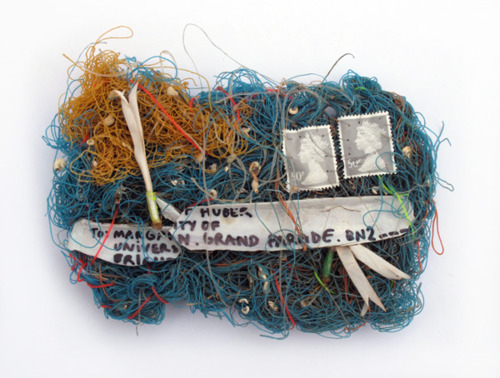 Found fishing line and hooks, 2004-ongoing from the series Mail Art
Found fishing line and hooks, 2004-ongoing from the series Mail Art
With an an inherent adoration for fabric and fables, the works is created from a tenacious a visual intuition. In her constant search for unpredictable mediums, be it sculpture, design, or photography, Riitta Ikonen indeed wears many hats…some she inevitably makes.
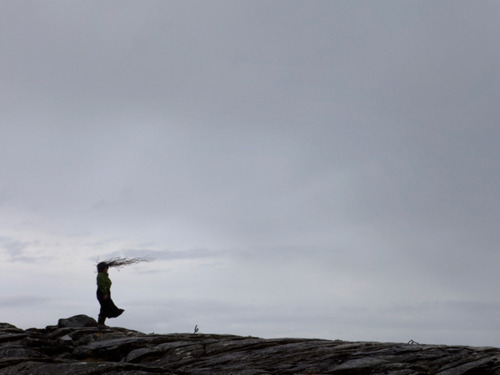 from the series Eyes as Big as Plates, 2011
from the series Eyes as Big as Plates, 2011
When asked to define her own title as an artist, like her work, Riitta’s reply is both playful but decidedly honest:
“People sometimes add a little something to my ‘artist’ title to make it more poignant. ‘Artist-designer’ has been around a few times. Illustrator is a nice title too. Illuminator - like Terminator with enlightening powers. I tell myself no one is going to care what you
call yourself if the work is good.”
To see more of Riitta Ikonen go here: {www.riittaikonen.com}
2 Apr 2012 / 1 note / Aubrey Hays Riitta Ikonen Wanderlust
Mr. Lester B. Morrison
In House of Coates, writer Brad Zellar provides insight into writer, artist and yeti, Lester B. Morrison, by exploring a single episode in Morrison life.
Lester B. Morrison, is best know for his publications through Little Brown Mushroom such as Broken Manual, an underground instruction manual for men looking to escape their lives. Morrison is credited with creating Broken Manual in collaboration with Alec Soth (who may or may not merely be Morrison’s hipper, better-adjusted alter ego) over the four-year period between 2006 and 2010.
Brad Zellar reconstructed the story in House of Coates from the results of Morrison’s MMPI (Minnesota Multiphasic Personality Inventory) test, the administrating psychiatrist’s notes and a shoebox containing photographs from the period in question.
Together Zellar’s writing and Morrison’s images tell the story of Morrison’s brief foray into romance, wherein Morrison came very close to beginning a new life that might have looked something like a Raymond Carver character’s.
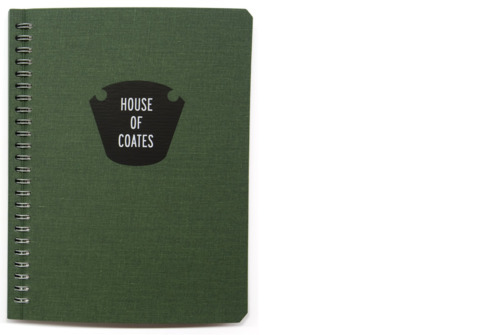
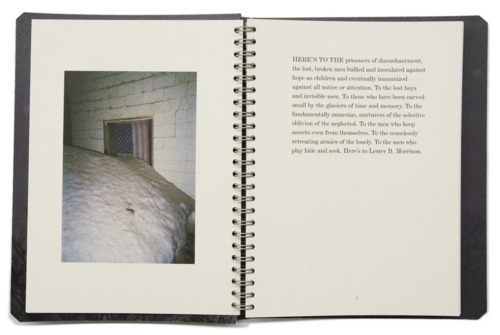
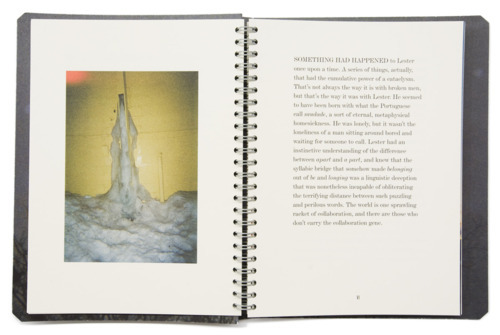
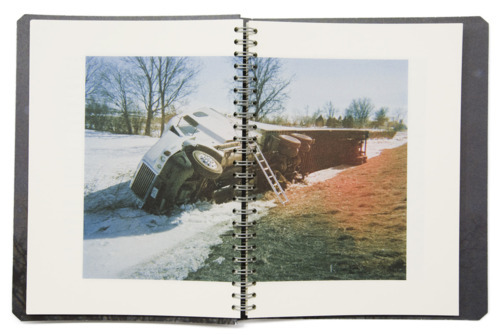

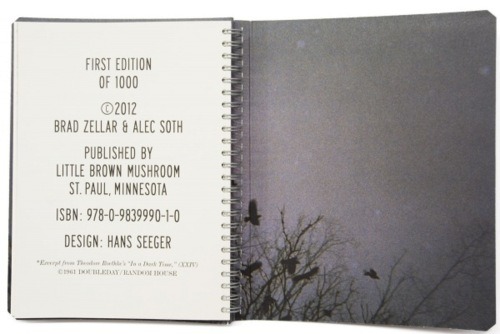
For more information visit: http://littlebrownmushroom.com/index.html
Liz Sales
30 Mar 2012 / 5 notes / Alec Soth Brad Zellar House of Coates Lester B. Morrison Little Brown Mushroom Liz Sales Bibliofile Friday

